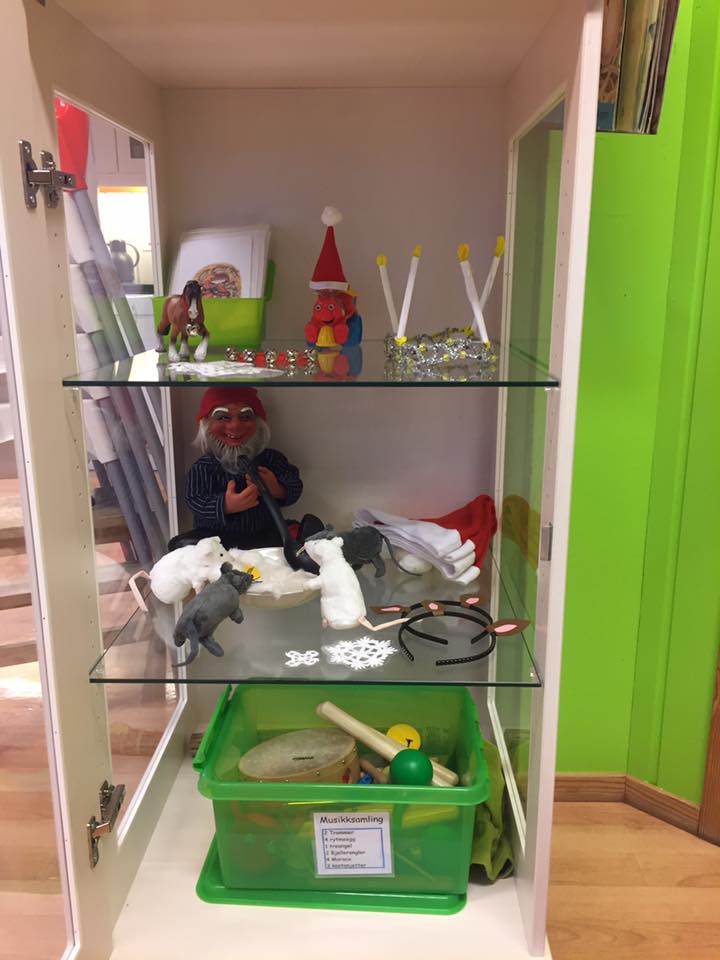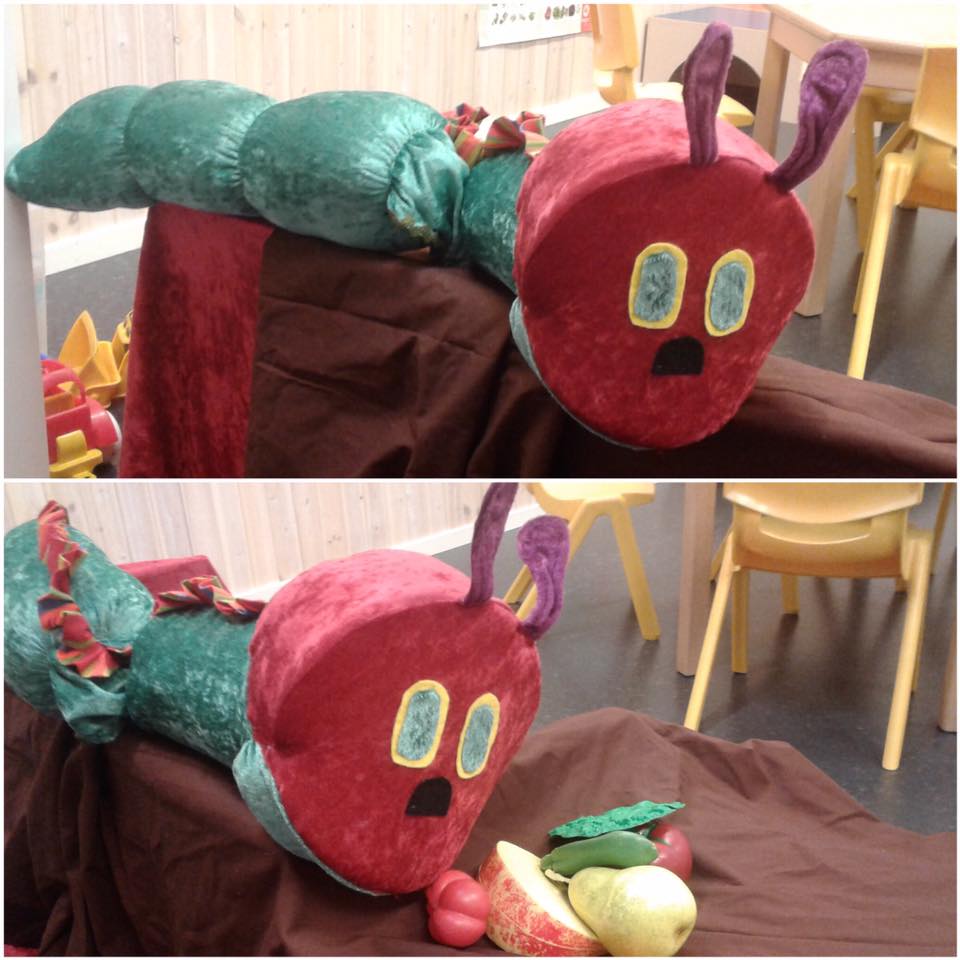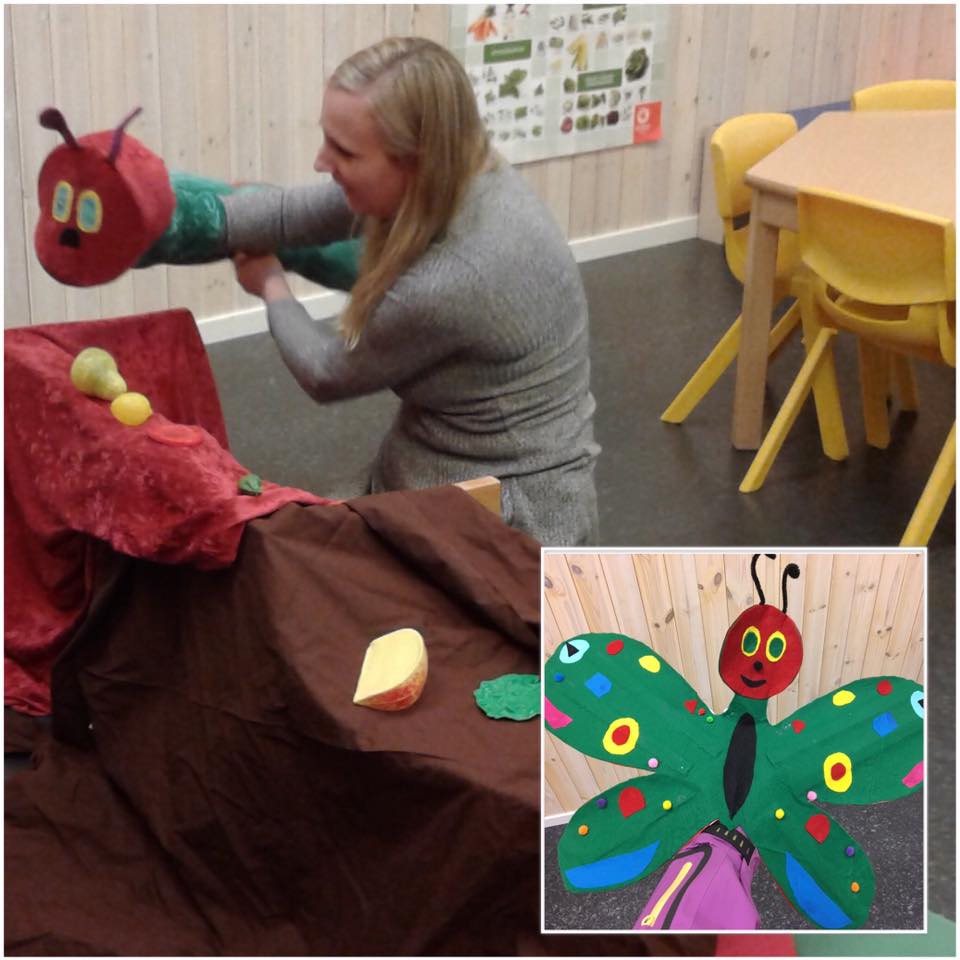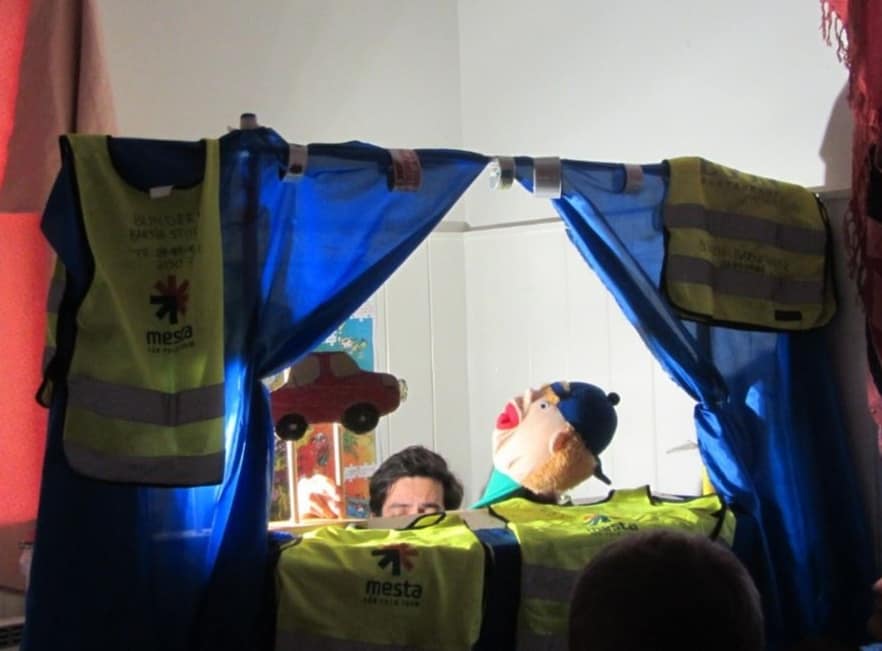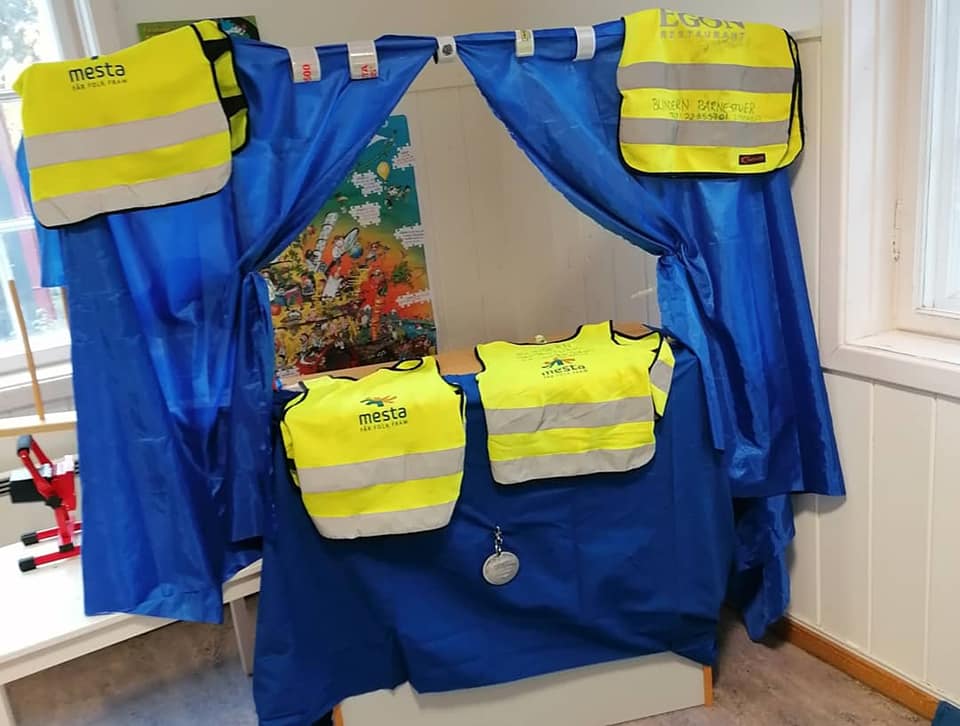GATHERING HOURS WITH PARTICIPATION AND MAGIC



At Stenbråttet nursery school in Røros, the staff are passionate about gathering time.
Here the children must be heard and allowed to take an active part. It creates both learning, wonder, enthusiasm and community.
Text: Magnhild Freuchen
– The witch Glinda spreads magic and joy
Expectant children's eyes look towards the figure that enters the room on the broomstick. They already know her well. Can you believe what she will conjure up from the big pot today?
- We love the gathering times at the Småtroll department, with children aged 0-3 years. We ourselves think that we have really found our own niche when it comes to how we want to work with the youngest in the kindergarten, says educational manager Wenke H.E. Wessel enthusiastically, and elaborates:
- The aim of the gathering hours is for all the children to participate, feel something and step into roles. In addition, the children should enjoy these moments, and that it should be experienced as pleasant for them.
Getting to work with the youngest children is a wonderful job, says Wessel. The children are completely new to the world, they are curious, they want to sense the world and they use body language to make themselves understood. She is genuinely concerned that the children in the ward should experience something exciting and new as a supplement to the home.
- This is precisely why my colleagues and I put in a significant amount of work every year to come up with something new and exciting. In our kindergarten, we work with a theme a year, and this year the theme was "So strange".
From the New Year until Easter, stories and stories were worked on. The theme is big and broad, and gave plenty of opportunities to be creative and have fun with the children.
- We wanted to take them into the world of imagination, combine this with sensing different things and let the child be the focus, says Wessel, and takes us into the gathering times where we meet the witch Glinda, who is always one of the adults and the litj witch Billie, who is always one of the children:
The "cleaning song" is started. As usual, it's time to clear the ward before the gang gathers for something else. Soon the ward is ready, and excited and engaged children's eyes look towards the table, knowing what will soon happen. The music has now changed to "Eternally" from Which Witch, and the children hum, sing or rock to the tune.
The purple tablecloth and a string of lights are placed on a table, and one of the one-and-a-half-year-old girls says with anticipation in her voice: "Glinda!". The witch Glinda has already visited the children 10 times, so they know her well.
– Glinda is a witch we made up. She flies on broomstick, has a black magic pot, hat, wand, bat, cat, crow and owl. With her magical powers, Glinda has conjured up various things that the children have been able to taste: Both sweet, salty, sour, umami and bitter.
But this day it is not just Glinda who comes in. She has with her the little witch, Billie, played by one of the 2-year-olds in the ward. The room is quiet, all eyes are on the two witches. Now the gathering time can begin.
- Glinda has already told the children about her good friend, Billie, and knows that she too has magical abilities. The children have had a look at the props in previous gatherings, and know them well, says the kindergarten teacher.
Back to the two witches: Billie puts down a pot, and Glinda asks her to wave her wand over it. The employee says a spell, swings the wand and pulls up a cat and face paint from the pot.
– The two witches talk a little about what the cat says, the children get to stroke it over the soft fur and we sing the song "lille kattepus". Then Glinda wonders if the children know what we can do with the nice face painting: Can we perhaps paint both snouts and whiskers on all the children so that they become little cats?
- The response is a big YES! from the whole gang, and soon everyone has felt the tickling brush on their face, and are looking at each other where they look like little kittens.
Now Glinda and Billie thank each other nicely, say see you next time, each grab their broom stick and fly out of the ward. The gathering time ends with the song by Pulverhexa, and inside the ward there are now around eleven small cats who meow, walk on all fours and who have been inspired by a simple and fun role-play.
– Glinda and Bille quickly became a huge success with the children. Everyone in turn got to dress up as Billie for a gathering time each, and they stepped into that role with the utmost seriousness and respect. Above the black pot we hung pictures of the children as they stepped into the role of Billie. There were three gatherings per week, so it took us a little over a month.
– We actively use the board to talk to the children: We practice names and describe and talk about what each individual is doing in the picture. There is a lot of learning in it. When the theme was finished, the children got their own picture home, in addition to the picture being put on Mykid, so that parents can also use it in conversation with the child, says Wessel.
- Together we create everyday magic!
As little researchers, the children get the opportunity to learn, explore and wonder. The experiences they take with them from these moments they enthusiastically share with the rest of the children's group.
- We were lucky enough to have a student with us for a period, who wanted to focus on the gathering hours. All the children were asked what they thought about gathering time, and based on the answers we received, it emerged that they liked gatherings in smaller groups, so that more people get the opportunity to contribute and talk, says educational manager Merete Lohn at the older children's department. ;
- But they also mentioned that it was nice to do things together, such as dancing the BliMe dance, she adds.
As a result of the children's feedback, the department chose to divide into age-classified groups, where the groups have had different themes linked to the kindergarten's theme "So strange": While one group has had Daidalos from NRK Super, with a self-produced program around this, the youngest in the department have been working on back pocket storytelling, had table theater and a presentation of the story of the wise owl who wanted to start school. The elders, on the other hand, have worked on various experiments related to snow, ice and water.
- In advance of these experiments, I talked to the children about the fact that we should start doing a little research. They themselves came up with the proposal to research snow, ice and water. What I then did was look for trials that we could carry out, says Lohn, and elaborates:
– We landed on the experiments magic thread, making soft ice cream in the snow, freezing different types of water, filtering snow from different places in the nursery, as well as "making snow" using artificial snow. I took most of the experiments from forskerfabrikken.no.
Lohn describes that the children these days show up in the group room, excited about who will be "today's researcher". This time it's Elias' turn, and he gets the red suitcase with a coat, glasses and a magnifying glass. Soon he has put on both a coat and glasses, and both he and the rest of the gang are ready to do some research. On the program this day is snow.
- We mix a few drops of food coloring with the water, so that it is easier to see what happens when the water mixes with the white powder. From forskerfabrikken.no we have bought some boxes of artificial snow and various other equipment, says the kindergarten teacher.
Elias hands out pipettes, measuring cups and Petri dishes with the measured amount in them to all the children. For many of them these are new terms, and beforehand the group has talked together about what it might mean and why it is called the way it is.
- This is good for language development, and the vocabulary is built up. We look at the recipe together, and it's great to measure the amount, look at the lines and assess when there is enough liquid. Simply science in practice!
Today's researcher gets the honor of standing in front of the other children and measuring up, while everyone eagerly follows along. After everyone has been given what they need, Elias shows the procedure for mixing water and artificial snow. They try their hand at the pipette, pouring in more and more water with careful movements. Finally, the rest of the water is emptied into it. They wonder: Why does it become more snow when we add a few drops of water?
- Here you need a magnifying glass to take a closer look at what happens to the artificial snow. We talk, philosophize and share thoughts about why it is the way it is. We hear about molecules and expansion, and here there are many theories!
- For me as an adult, it is rewarding to be able to take part in such conversations with the children. Here there is room for all possible theories, and I like that there is not a definitive answer to everything, says Lohn.
Then, after this session is finished, the gang is ready to tell the rest of the department about what they have done and experienced. Then all the photos that have been taken during the experiment come in handy. In advance, the "research team" has talked about what they want to pass on to the others.
- This time Elias got to carry out the experiment in front of the rest of the children. He measured, poured water and told what happened along the way. He walked around so everyone could get a close-up view.
Lohn says that the framework around these joint gatherings has been the same from time to time. The older children in the department arrange the set by setting out chairs for the rest. To the stanzas of the song "Koffor det?" By Petter Wavold everyone takes their seats. Today's researcher then presents what they have found out, either by showing pictures or telling stories.
- Sometimes we have an activity linked to the day's gathering, and then we divide into smaller, age-mixed groups. It can be to read a book, or carry out an activity. An example is the time we brought in boxes of snow, which we decorated with paint using the pipettes, says Lohn, and states:
- When we learn something new, and do things together, a bit of everyday magic always happens!
